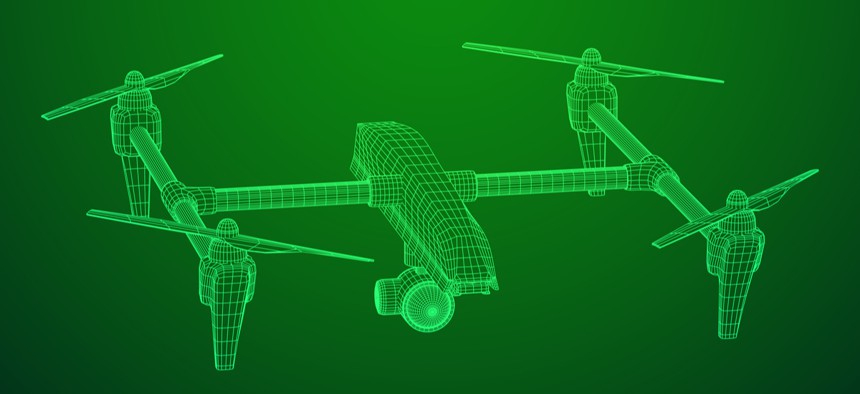Industry Group Asks U.S. CTO and FAA Administrator to Focus on Large Drone Regulations

brovkin/Shutterstock.com
The Federal Aviation Administration is working on regulations for small drone flights but has yet to take up unmanned systems over 55 pounds.
The new Federal Aviation Administration administrator, Stephen Dickson, was sworn in Monday and already has a new drone request waiting on his desk. As does Michael Kratsios, the associate director of the White House Office of Science and Technology Policy, who was confirmed as U.S. chief technology officer just two weeks ago.
On Monday, the Commercial Drone Alliance sent letters to both officials asking the FAA to issue regulations—or at least a regulatory framework—for integrating large unmanned aerial systems, or UAS, into the national airspace.
“The Commercial Drone Alliance looks forward to working with newly sworn in FAA Administrator Stephen Dickson and recently confirmed U.S. CTO Michael Kratsios to develop commonsense and business-friendly regulations for large UAS,” Alliance Executive Director Lisa Ellman said in a statement to Nextgov. “With a clear regulatory roadmap in place, organizations can confidently continue to develop, operate and grow their safe and innovative large UAS programs right here in the U.S.”
The letter notes the administration’s efforts to date on small UAS, including a pending rule to allow flights at night and over people.
“However, weight alone is not a reliable predictor of safety and risk, particularly when considering the safety of a fully equipped, certificated and cooperative large UAS,” they wrote. “The FAA should not forget about, or otherwise impede the development of, large UAS.”
The alliance is calling on FAA to begin work on regulations for drones that weigh more than 55 pounds, including all sensors and attachments.
Inaction on the part of the administration will have “dire and far-reaching” consequences for the drone industry, the signatories argue, including stagnation.
“Companies are ready and willing to invest significant sums of money to develop, test, certify and operate large UAS in the United States,” the letter reads. “However, many companies are unwilling to commit the human, technical and financial resources necessary to fund large UAS initiatives without a clear regulatory roadmap and certainty with respect to certification and other critically important processes for large UAS.”
If this occurs, the alliance says drone manufacturers will move overseas to countries that do have a regulatory framework—or where development won’t be hampered by a lack of one.
“This was precisely the experience early on with small UAS in the United States, when companies took their development and operations to other countries until a basic regulatory framework was in place here for small UAS,” alliance members wrote. “The FAA has long been a global leader in aviation safety and certification. However, to maintain that position, it must remain proactive, flexible, communicative and nimble in terms of large UAS operations.”
The alliance is asking the FAA—with input from OSTP—to kickstart that regulatory process on an accelerated timeline.
Editor's Note: This story has been updated to correct an official's title.






